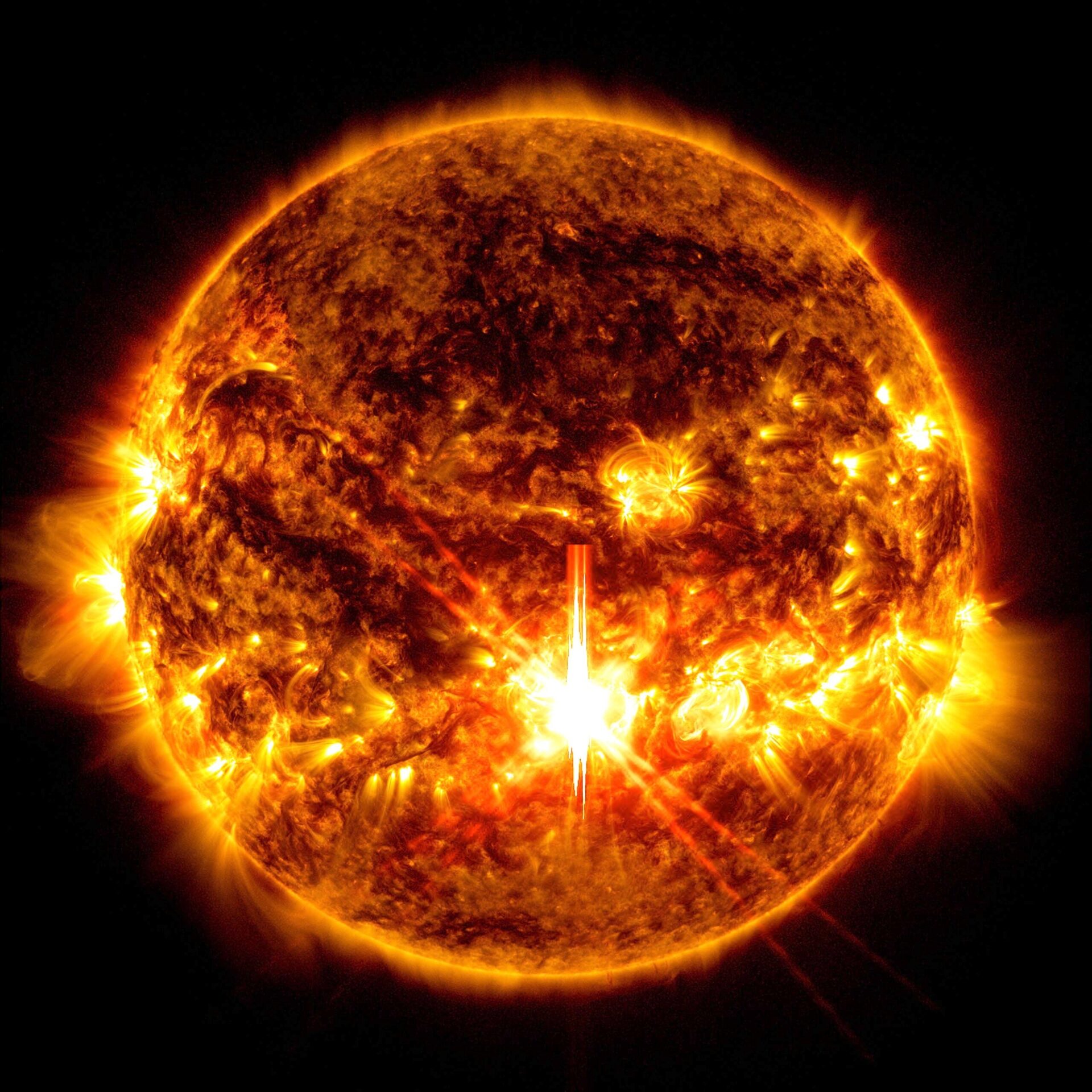*
Sky & Telescope diagram
From the surface of distant Pluto, the Sun’s heat is so weak that the landscape features glaciers of solid nitrogen and plains of methane ice. We haven’t ever visited 136472 Makemake, Pluto’s neighbor in the Kuiper Belt, but at an average 45 astronomical units from the Sun and with a brightly reflective methane-ice cover, Makemake should have a mean surface temperature around 40 kelvin.
Some 15 years ago, observers indeed found such cold temperatures across most of the 1,430-kilometer-wide body — but they noticed that something on (or near) it registered as significantly warmer. Maybe Makemake has dark speckles? A little dark moon? Either would absorb more solar radiation than bright methane ice and add a little excess warmth. And although a small, dark moon was discovered in 2016, it alone couldn’t explain the odd warm bump in Makemake’s infrared emission.

NASA / ESA / Alex Parker
Now observations from the James Webb Space Telescope (JWST) have revealed that the extra emission is even hotter than we realized. The new data imply that neither dark speckles nor a moon can explain the dwarf planet’s odd thermal properties. Instead, researchers have proposed two new explanations for the excess warmth. Perhaps Makemake has a “hot spot,” a cryovolcanic flare-up piping heat from its warmer interior, or maybe it has a thin ring of dark, carbon-rich particles. Or maybe both.
The study by Csaba Kiss (Konkoly Observatory) and coworkers combines the latest JWST measurements with those from Spitzer, Herschel, and the ground-based ALMA radio-telescope array to view Makemake’s thermal emission spectrum at a broad range of wavelengths. ALMA samples the long-wavelength end, at 1.3 millimeters, while JWST gets to wavelengths as short as 18 micrometers.
With this new combined set of observations, impressive both in its breadth and its detail, the old models of Makemake with dark patches or Makemake with a moon simply don’t fit. Instead, Kiss and coworkers demonstrate that the model that works best is one of an icy Makemake with a tiny patch, as little as 20 km across, of something dramatically hotter.
“Hot” is, of course, relative — this putative hot spot would have a temperature of 147 K (–126°C or –195°F). That’s definitely icy for us and a bit colder than it ever gets on Mars, but it’s insanely hot for the Kuiper Belt. The source could be a localized eruption of “cryolava,” an ammonia-rich brine thought to be present in the postulated subsurface oceans of other icy worlds. For example, Makemake’s excess thermal emission matches that of Enceladus, a miniworld of volcanically-driven geysers. And like on Enceladus, the heat could be patchy, emitting from discontinuous vents or fissures, so that the apparent temperature is an underestimate of the hottest volcanic centers.

NASA / JPL / GSFC
In fact, another set of JWST observations provides circumstantial evidence for the possibility of Makemakean volcanic activity. These reveal that methane ice on its surface had less deuterium (“heavy hydrogen”) than expected. This implies that Makemake’s methane (CH4) isn’t a relic from its formation but instead formed recently via some chemical reaction with water.
However, erupting geysers aren’t the only possible explanation. Kiss’s team suggests that a dark ring of very fine carbon-rich particles could produce the observed thermal bump. Rings aren’t unheard of around bodies of Makemake’s size — they also surround 136108 Haumea, 50000 Quaoar, much smaller 10199 Chariklo, and perhaps others. However, the particles circling Makemake would have to be both unusually small and of an unusual carbon-rich composition for the ring explanation to work — and they would have to be oriented to have avoided detection when Makemake occulted a star in 2011.
At the end of their article, Kiss and his team point out that the two explanations aren’t actually mutually exclusive. After all, the cryovolcanoes on Enceladus are responsible for Saturn’s E ring. If Makemake has a volcano that erupts tiny carbon-rich particles along with its cryolava, those particles could hang out as a dark ring. Volcano or ring? Why not both?




